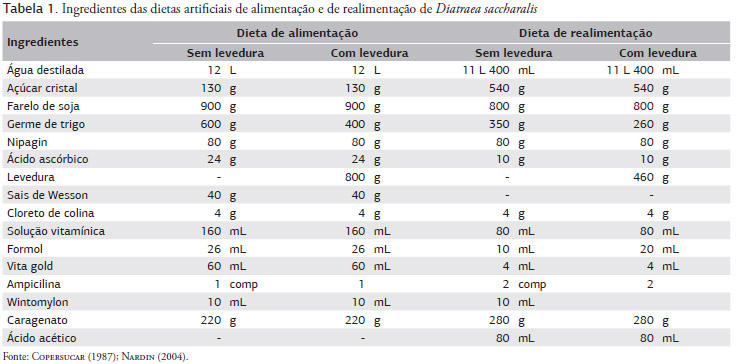The aim of this work was to evaluate different diets for Diatraea saccharalis larvae, obtaining information about the biological characteristics of the pest, and to evaluate the quality of Cotesia flavipes parasitoid, to improve mass rearing method. For the accomplishment of the experiment, 24 hour-old larvae were transferred to tubes (25 larvae/tube) containing artificial diets with yeast and wheat germ or just wheat germ as protein source. After approximately 15 days, the larvae were removed from tubes and placed in Petri dishes, being observed D. saccharalis larvae not parasitized and parasitized for evaluation of D. saccharalis and C. flavipes.biological characteristics. Biological characteristics of D. saccharalis were also evaluated in 15 day-old larvae. Pupae mass of C. flavipes.from mass rearing were classified in three different sizes separated in small (1.3 to 2.5 cm of length), moderate (2.5 to 3.5 cm of length) and large (3.5 to 4.0 cm of length) classes. After the adult emergency, the parasitism was evaluated in D. saccharalis larvae, being observed the number of males and females, size of pupae mass, sex ratio and number of unviable pupae. The artificial diet that contains wheat germ is the most suitable for D. saccharalis mass rearing and C. flavipes. Pupae mass of large size presents better quality of C. flavipes.
Crambidae; sugarcane borer; biological control; sugarcane






